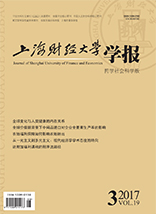Fringe benefits provided by Law of Private Income Tax(PIT)belong to the item of income from wages and salaries. However, fringe benefit tax is not feasible because of the difficulty of collecting real information, severely impairing the function of equal redistribution of PIT. Thus, the reform and perfection of PIT law shall be the top priority of the new-round reform of fiscal and taxation system. However, a perfect substantive law always matches a perfect procedure law. The system of tax file number(TFN)for individual taxpayers is introduced by the Amendment of Law of Tax Administration, aiming to collect tax information and reveal hidden incomes through unified codes, universal application and rules of pay reports. TFN’s value selection of the balance of information power between taxpayers and tax authority, as well as its consistence with the core value of reform of PIT, draw into the conclusion on the justice, feasibility and efficiency of support for levying on fringe benefits. The amended Tax Administration Law shall render the authority of using tax information on TFN when checking PIT tax returns on tax authorities, making it a basic system of procedural tax law to break through the obstacles to tax on fringe benefits.
 / Journals / Journal of Shanghai University of Finance and Economics
/ Journals / Journal of Shanghai University of Finance and EconomicsJournal of Shanghai University of Finance and Economics
LiuYuanchun, Editor-in-Chief
ZhengChunrong, Vice Executive Editor-in-Chief
GuoChanglin YanJinqiang WangWenbin WuWenfang, Vice Editor-in-Chief
The Procedure Law Path to Fringe Benefit Tax: Focus on the Introduction of TFN for Individual Taxpayers by Amendment of Law of Tax Administration
Journal of Shanghai University of Finance and Economics Vol. 19, Issue 03, pp. 109 - 118 (2017) DOI:10.16538/j.cnki.jsufe.2017.03.010
Abstract
References
Abstract
Cite this article
Chen Shaoying, Wang Yixiao. The Procedure Law Path to Fringe Benefit Tax: Focus on the Introduction of TFN for Individual Taxpayers by Amendment of Law of Tax Administration[J]. Journal of Shanghai University of Finance and Economics, 2017, 19(3): 109–118.
Export Citations as:
For




 8199
8199  7871
7871

